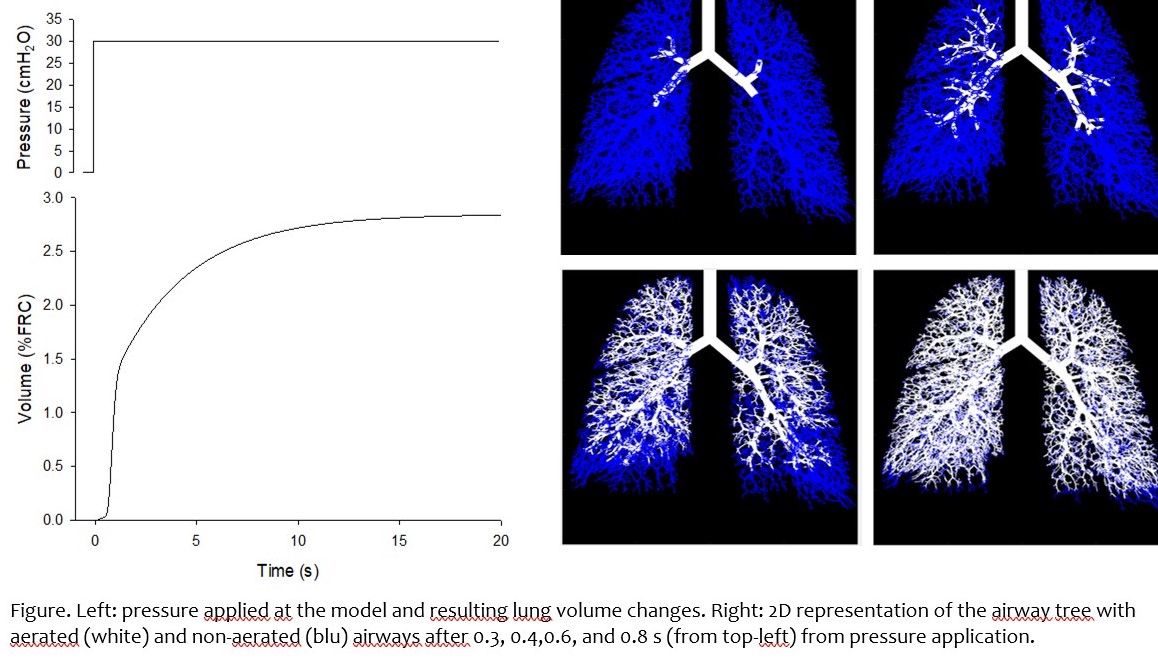Abstract
Background: Lung aeration is a critical process at birth. How to promote lung aeration without injuring the fragile newborn lung is still unknown. We aim to develop a morphologically-coherent computational lung model incorporating the evolving physical properties during the transition from liquid-filled to gas-filled lungs.
Methods: We adapted a 3-D morphological model of the airway tree (Tgavalekos et al., JAPP 2005) to describe the respiratory system of preterm infants. Changes in the resistance, inertia, and compliance during aeration of each airway and the surface tension at the air-liquid interface were modeled. The model included 478,806 components. It was fed to CadenceŽ VirtuosoŽ platform for performing simulations in the time domain.
Results: The developed model allows the simulation of lung aeration at birth and the analysis of the sequence of airway emptying and the heterogeneity of aeration at each time point (Figure).

The simulated response to a sustained lung inflation matches the dynamic of lung aeration at birth observed in animal models and human infants.
Conclusion: This model, integrating lung morphometry, airway and tissue mechanics, and gas-fluid interaction is able to simulate a lung aeration process. It may help evaluate the impact of lung conditions and respiratory support strategies on the timing and heterogeneity of lung aeration and define a lung protective resuscitation maneuver.